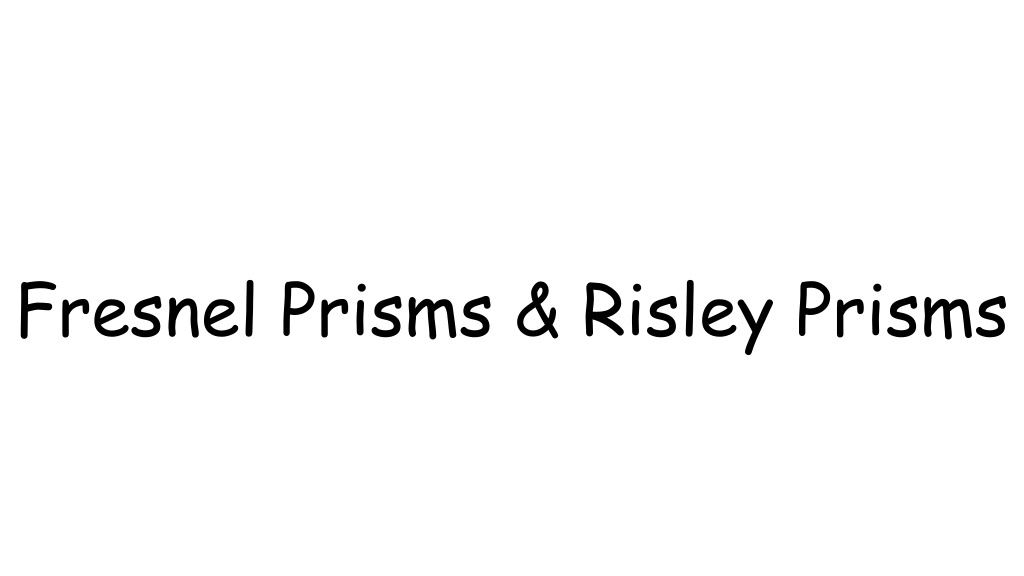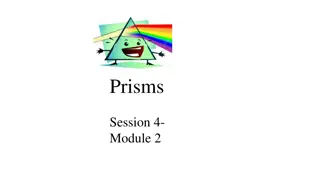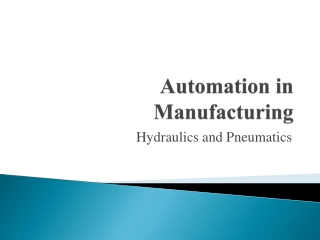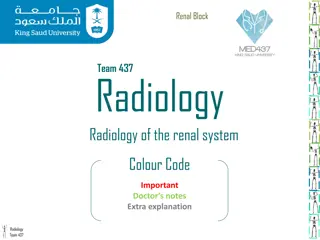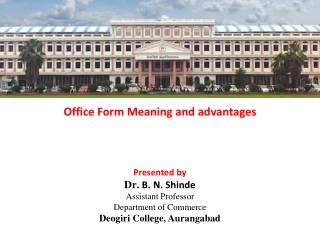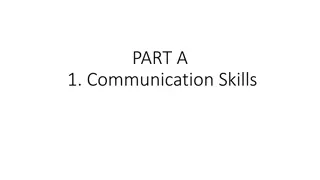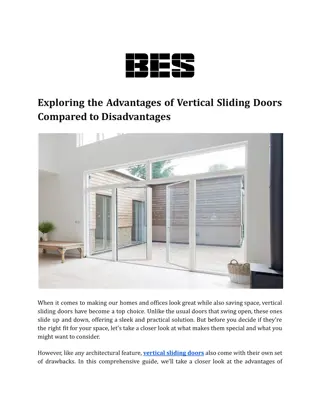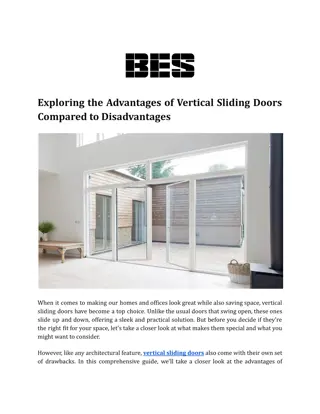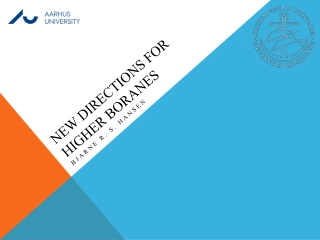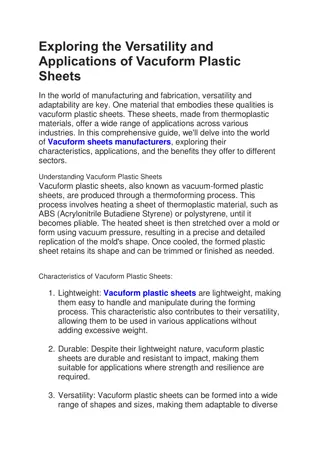Understanding Fresnel Prisms: Advantages, Disadvantages, and Applications
Fresnel prisms, a type of prism where the angle of refraction only depends on the surface angle and material's refractive index, offer advantages such as thinness, lightweight, and flexibility but have disadvantages like cosmetic differences and reduced visual performance. They find applications in sectors requiring high prism amounts, sectorial eye muscle applications, and visual field defect corrections.
Understanding Fresnel Prisms: Advantages, Disadvantages, and Applications
PowerPoint presentation about 'Understanding Fresnel Prisms: Advantages, Disadvantages, and Applications'. This presentation describes the topic on Fresnel prisms, a type of prism where the angle of refraction only depends on the surface angle and material's refractive index, offer advantages such as thinness, lightweight, and flexibility but have disadvantages like cosmetic differences and reduced visual performance. They find applications in sectors requiring high prism amounts, sectorial eye muscle applications, and visual field defect corrections.. Download this presentation absolutely free.
Presentation Transcript
A prisms angle of refraction depends only upon the angle of the surfaces and the index of refraction of the material of which the prism is made. The angle of refraction is independent of the prism s thickness.
Advantages It is very thin and extremely lightweight. It is flexible and can be applied to an existing spectacle lens, making it possible to apply the lens in-house, without an in-house optical laboratory. it can be cut to any shape with scissors or a razor blade. They do reduce magnification differences considerably.(But do not completely eliminates it.)
Disadvantages Cosmetic - Fresnel prisms look different than conventional lenses. They are different enough that they may be noticed by others. Cleaning - Because Fresnels have a number of small ledges, they are harder to clean than conventional lenses. Visual performance High-powered prisms will cause a slight decrease in visual acuity. ( because of chromatic aberration and distortion). It also cause a slight loss of visual acuity caused by reflections at the prism facets, especially under certain sources of illumination.
Indications High Amounts of Prism Because of its thickness advantage, Fresnel prism is especially useful for high amounts of prism. Use and Reuse Fresnel prism lenses are easy to apply and remove. They may be used and reused. This is helpful when determining how a given prism amount will work long term or for use during visual training.
Indications Sectorial Application A partially paralyzed extraocular muscle may result in a different amount of prism needed for different directions of gaze. A Fresnel lens can be cut to fit that particular lens area.
Indications Visual Field Defects With visual field defects, prism may be applied in one section of the lens with the base direction in the direction of the defect and the edge of the prism close to the central visual area. This way the eye travels only a short distance before it picks up the image through the prism. The image appears closer to the center and can be seen without moving the head. If the defect is a constricted visual field down to 5 to 15 degrees of viewing area, prism from 20 to 30 prism diopters could be placed base out on the temporal sides of the lenses and base in on the nasal sides.
Application of prism Visual field defect Procedure : To measure for correct placement of a prism on one half of the spectacle lens in the case of homonymous hemianopia, the spectacles, properly adjusted, should be on the subject s face. The subject looks into the viewing eye of the practitioner. The eye with the visual field loss nasally is occluded, usually with a cover paddle. A near point card or other straight edge is brought in from the temporal, non seeing side. When the subject first reports seeing the card, the location of the card is marked on the lens with a vertical line.
Cont The edge of the prism is placed 3 to 5 mm temporalward from this position.
Conti.. Eli Peli s High-Powered Prism Segment. Another method of sectorial application of prism for helping the person with homonymous hemianopia places high-powered (30 to 40 ) prism in certain segment areas of the lens. Two prism segment areas, with their base-apex axis in the horizontal position, are placed on the lens prescribed for the eye with the visual field loss. The upper one is placed above the pupil in alignment with the upper limbus and the lower one below the pupil in alignment with the lower limbus.
Conti.. These prisms are placed base out and create diplopia in that eye. Objects seen through the segment areas are shifted from the nonseeing to the seeing part of the visual field. With adaptation the individual is able to visualize the parts of the objects viewed through the prism in the areas where they would normally be located, expanding the visual field area by up to 20 degrees. Such prisms may be constructed as a prism segment within the carrier spectacle lenses.
Indication Cosmetics of Nonseeing Eyes The use of prism to improve the appearance of a blind or prosthetic eye is discussed. Fresnel prisms can be used in such instances.
Indication Nystagmus
Indication Nystagmus is a condition characterized by a constant back and forth movement of the eyes. Such movement is involuntary and reduces vision. In some cases nystagmus may slow when the person looks to one side or the other. For example, if the examiner sees that movement slows when the person looks to the right, equal amounts of prism may be applied to both lenses. The correct base direction would be base left. Because the eyes turn toward the apex, prism base left will keep the head pointed straight while the eyes turn to the right.
ROTARY PRISMS Application of obliquely crossed prisms that is used on a regular basis in ophthalmic practice. That application is called a rotary or Risley s prism. A rotary prism is a combination of two prisms. These prisms are placed one on top of the other. Initially, their base directions are exactly identical, but as the prisms are rotated, their bases move by equal extents in opposite directions. For example, suppose two prisms of 10 each are placed on top of one another base- to-base. The total prismatic effect is 20 But if they are placed base-to-apex, then their total prismatic effect is zero.
